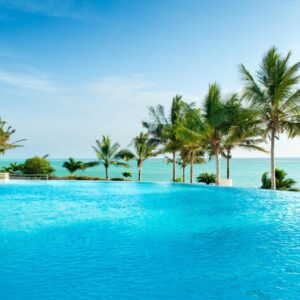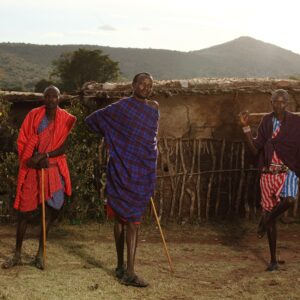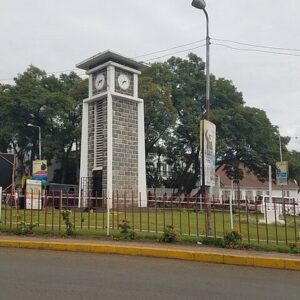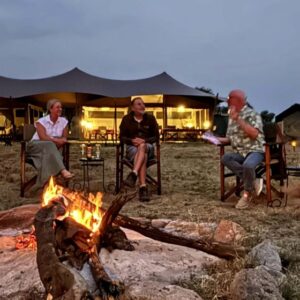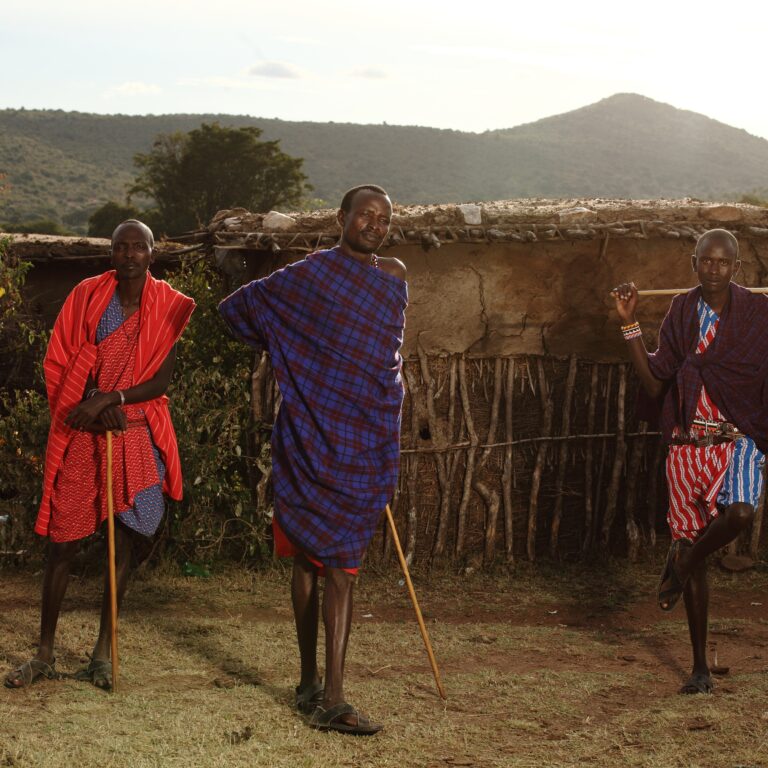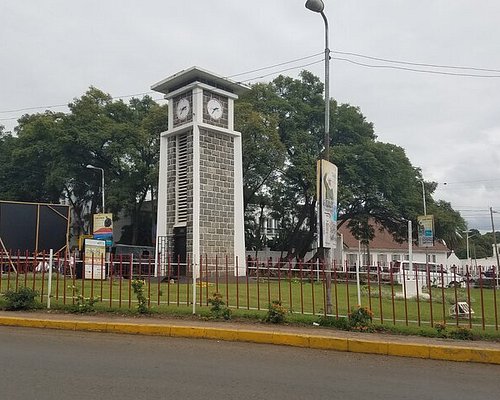When climbing Mount Kilimanjaro, a combination of a water bladder (like a CamelBak or Platypus) and reusable water bottles (like Nalgene bottles) highly recommended for effective hydration, with a minimum daily capacity of 3-4 liters required. Disposable plastic water bottles, prohibited on the mountain. The air thins, the temperature drops, and the sun beats down with a surprising intensity. Climbing Mount Kilimanjaro, Africa’s highest peak, is a monumental physical and mental challenge. Amidst the stunning landscapes and the rhythmic “pole pole” (slowly, slowly) of the ascent. One of the most critical aspects of a successful and safe climb, often overlooked: hydration. Without proper water intake, the risk of altitude sickness and exhaustion increases dramatically. This is why the choice of your water vessel—a water bladder, a water bottle, or a combination of both—is a crucial decision for any climber.
The Water Bladder: The Hydration Workhorse
A water bladder, also a hydration reservoir, flexible, plastic pouch designed to be carried inside a backpack. Its connected to a long hose with a bite valve at the end. Allowing for hands-free sipping while on the move. For many Kilimanjaro climbers, the water bladder is the primary source of hydration during the day’s trek. The main advantage of a water bladder is its convenience. As you navigate the winding trails of the Shira Plateau or the rocky terrain of the Barranco Wall, you don’t need to stop, take off your pack, and rummage for a bottle. A quick sip from the bite valve is all it takes. This constant, easy access encourages frequent sips, which is exactly what your body needs to combat the dehydrating effects of altitude. On Kilimanjaro, a steady intake of water is far more effective than gulping down a liter all at once.
Most trekkers on Kilimanjaro carry a 2 or 3-liter water bladder. This capacity is generally sufficient for the day’s trek between camps. Modern bladders designed with wide openings for easy filling and cleaning, and many feature quick-release hoses, making it simple to detach the bladder from the pack for refilling at a water source. However, water bladders have their drawbacks. It can be difficult to monitor how much water you’ve consumed, as the bladder hidden inside your pack. This can be a problem if you’re not disciplined about drinking. They can also be challenging to clean and dry completely, and a puncture or leak can be a significant setback. Furthermore, on colder days, the water in the hose can freeze, making it impossible to drink. Climbers often resort to blowing air back into the hose after each sip to prevent this, or they use insulated covers for the hose.
The Water Bottle: The Reliable Backup
The classic water bottle, whether made of plastic, aluminum, or stainless steel, has been a staple of hiking for generations. On Kilimanjaro, the water bottle serves as a reliable and versatile complement to the water bladder. Many climbers use two 1-liter Nalgene-style bottles, clipped to the outside of their packs or stowed in side pockets. One of the key benefits of a water bottle is its simplicity and durability. There are no parts to break or hoses to freeze. You can easily see how much water you have left, which helps you manage your intake throughout the day. Water bottles are also much easier to fill and clean than bladders.
On the colder summit night, water bottles become particularly important. Guides often advise climbers to fill their Nalgene bottles with hot water at the final camp before the ascent. The hot water serves two purposes: it won’t freeze as quickly, and it can be used as a makeshift hand warmer or placed in a sleeping bag to provide warmth. On the other hand, a water bladder’s hose would likely freeze solid on the summit push. The primary disadvantage of water bottles is the inconvenience of access. To take a sip, you usually have to stop, unclip the bottle, or ask a hiking partner to retrieve it from your pack. This can break your rhythm and make it less likely that you’ll drink as frequently as you should.
Why Do We Need a Water Bladder and a Water Bottle? The Synergy
So, should you choose a water bladder or a water bottle for Kilimanjaro? The answer, for most climbers, is both. A combination of a water bladder and one or two water bottles provides the best of both worlds, offering convenience and reliability. For hiking Mount Kilimanjaro, carrying both hard-sided water bottles and a hydration bladder recommended for optimal hydration. The bottles serving as a backup in freezing temperatures when bladders might be unusable due to frozen valves. Nalgene bottles are a popular choice for their durability and wide mouths, while hydration bladders (like HydraPak or Platypus) offer convenience for frequent sipping, especially at lower elevations.
The water bladder is your primary source of hydration during the day’s trek. It allows for constant, hands-free sipping, ensuring you stay well-hydrated without disrupting your momentum. A 2 or 3-liter bladder is a perfect choice for the long hours of hiking.
The water bottle, on the other hand, serves as your backup and your thermal tool. You can use it to carry extra water, or, more importantly, you can fill it with hot water for the colder parts of the climb, especially on summit night. Using a bottle for your electrolyte mix is also a great idea. This prevents the residue from gumming up your bladder, which is much harder to clean.
This combination also provides a crucial level of redundancy. If your water bladder springs a leak or the hose freezes, you still have your bottles to rely on. If your bottle cracks, you still have the bladder. This dual system ensures that you never left without a way to carry and drink water, which is a significant safety factor on a mountain as formidable as Kilimanjaro.
water bottle vs water bladder for mountain climbing
For mountain climbing, the choice between a water bladder and a water bottle depends on activity style, with bladders offering hands-free convenience for continuous hydration, while bottles are more durable, easier to clean, and provide better temperature protection. Hydration bladders are ideal for those who need to drink large quantities of water without stopping, but they can be difficult to refill and clean, and may freeze in cold weather, according to Appalachian Outfitters. Water bottles are more rugged and simpler to manage, allowing for easy refills and cleaning, but they require more effort to access.
When comparing the two, it’s not a matter of one being inherently better than the other. Instead, it’s about understanding their specific roles and how they complement each other on a Kilimanjaro climb. For hiking Mount Kilimanjaro, climbers should plan to carry at least 3-4 liters of water daily. Utilizing a combination of water bladders and hard-sided water bottles, as disposable bottles prohibited and water bladders can freeze at higher altitudes.
While water bladders like CamelBaks offer convenient hands-free drinking. Insulated water bottles such as Nalgene are crucial backups, especially during the freezing summit night and for easily mixing powdered drinks like electrolytes. Choosing between a water bladder (hydration reservoir) and a water bottle depends on your activity and personal preferences. Bladders offering convenient hands-free hydration and larger capacity for activities like hiking. Bottles provide durability, ease of cleaning, and visible water levels, making them suitable for shorter outings or when you need to monitor intake closely.
What is the best water bottle for Kilimanjaro?
Our gear list includes BOTH a water bladder, such as a 3 liter CamelBak or Platypus, and a water bottle, such as a 1 liter Nalgene. Water bladders also known as hydration bladders or reservoirs. High capacity: the bladders come in various sizes which allow you to carry a large supply of water. For climbing Kilimanjaro, its recommended to bring a combination of two one-liter hard-sided water bottles. Such as Nalgene bottles, and a 2-3 liter hydration bladder, like a HydraPak or Platypus reservoir, as your primary water storage. Disposable plastic water bottles not allowed on Kilimanjaro.
Do you need a pee bottle for Kilimanjaro?
One important aspect of preparation is choosing the right equipment, and for many climbers, that includes a pee bottle. A well-designed pee bottle can make a big difference in comfort and convenience while hiking Kilimanjaro. It’s important to choose one that is suitable for the climb. Nalgene water bottles renowned for their durability, wide mouth design, leak-proof construction, and BPA/BPS-free materials. Making them a popular choice for everyday use. Outdoor adventures, and hydration tracking, with newer “Sustain” models incorporating 50% recycled plastic.
How do you get water on Kilimanjaro?
During your climb, our porters collect drinking water from streams fed by glaciers high on Mount Kilimanjaro. The water was thoroughly boiled and passed through a sieve to remove any large particles before being served. While visiting Mount Kilimanjaro, you can rest assured that there will be public toilets at each camp stop. But don’t expect too much; you won’t find porcelain loos, marble sinks, or hot water in these primitive public washrooms. Usually bereft of even a door.
Can a water bladder be used on Kilimanjaro summit day?
While water bladders can be used for most of your Kilimanjaro climb. It’s strongly recommended to also carry water bottles for summit day due to the high probability of the bladder and its hose freezing in the cold temperatures, particularly between Stella Point and the summit. Although some hikers have found ways to mitigate freezing with insulated hoses or by blowing water back into the bladder. Many find it difficult due to exhaustion and cold on summit night, leading to frozen water bladders and potential dehydration. During your climb all drinking water is collected by our porters from streams that are fed from glaciers high on Kilimanjaro. Before being served all the water is boiled then placed through a sieve to remove any large particles. We provide you with 4 liters of boiled water per day for drinking only.
How to Stay Hydrated While Climbing Kilimanjaro?
To stay hydrated while climbing Kilimanjaro, drink 3–4 liters of water daily. Use an insulated hydration bladder to prevent freezing at higher altitudes. Start hydrating before the climb and sip water regularly during the trek. Add electrolyte tablets to replace lost salts. Monitor urine color—clear or light yellow indicates good hydration. Avoid caffeine and alcohol, as they dehydrate. Listen to your body; headaches or fatigue may signal dehydration. Proper hydration helps prevent altitude sickness and boosts performance. Water bladder for hiking. Platypus water Bladder. Hiking water Bottle.
Water bottle vs water bladder for mountain climbing weight
For mountain climbing, hydration bladders are often considered better for weight distribution and convenience by providing hands-free access, while water bottles offer better durability, ease of cleaning and refilling, and more accurate water level monitoring. While a bladder may offer a slight weight advantage over bottles for carrying large volumes, the primary weight factor is the water itself, which weighs the same regardless of the vessel. CamelBak is a viable option for Kilimanjaro climbing, with hydration bladders providing high-capacity, hands-free water carrying, though a separate water bottle is recommended for redundancy and ease of cleaning. Hydration packs offer convenience in active environments compared to bottles, but some models may have issues with seals.
Best water bottle vs water bladder for mountain climbing
For mountain climbing, water bladders are superior for their hands-free, continuous access to water, but water bottles are better for durability, ease of cleaning, and cold-weather use. The best choice depends on personal needs, with bladders ideal for long efforts in hot conditions and bottles suitable for extreme cold or when needing to easily monitor water supply. You can carry more water in a more efficient and comfortable way using bladders compared to using bottles, ultimate Kilimanjaro gear list. If you have a lot of distance to cover, it is very hot, or if you sweat a lot and therefore need to carry large quantities of water, we would highly recommend using bladders.
What are the water purification tablets for Kilimanjaro?
For climbing Kilimanjaro, the primary method of water purification involves using tablets containing chemicals like chlorine dioxide or iodine, which are effective at killing bacteria, viruses, and other pathogens. These tablets are used at higher elevations, while at lower elevations, water is collected, boiled, and filtered. Although trekking companies provide purified water, some trekkers may choose to bring personal purification tablets such as Micropur or Aquamira for added safety, especially for those with sensitive stomachs.
In conclusion
While the water bladder an invaluable tool for ensuring consistent hydration during the daytime trek. The water bottle provides the necessary reliability, versatility, and cold-weather functionality essential for the more extreme conditions on Kilimanjaro. A successful and safe climb depends on a well-thought-out plan should absolutely. Include carrying both a hydration bladder and at least one or two sturdy water bottles. It’s a small detail that can make a world of difference between a challenging trek and a successful, exhilarating summit experience. Stay hydrated, stay safe, and enjoy the journey to the “Roof of Africa.”

